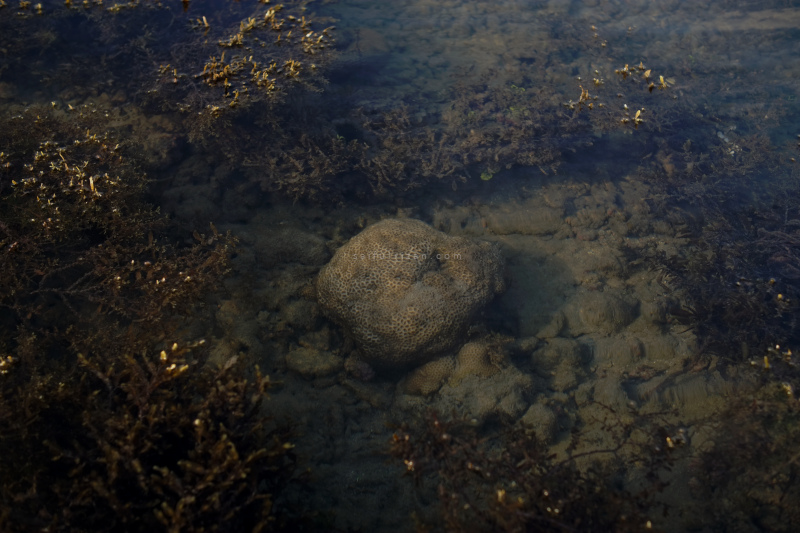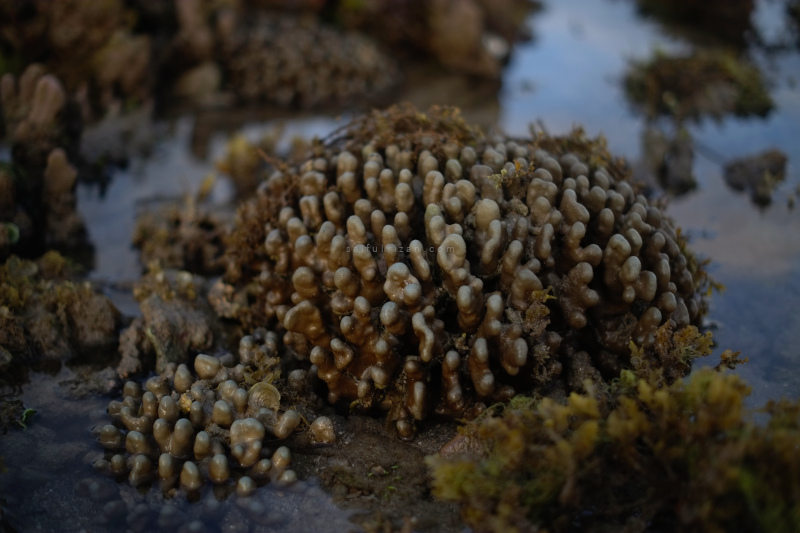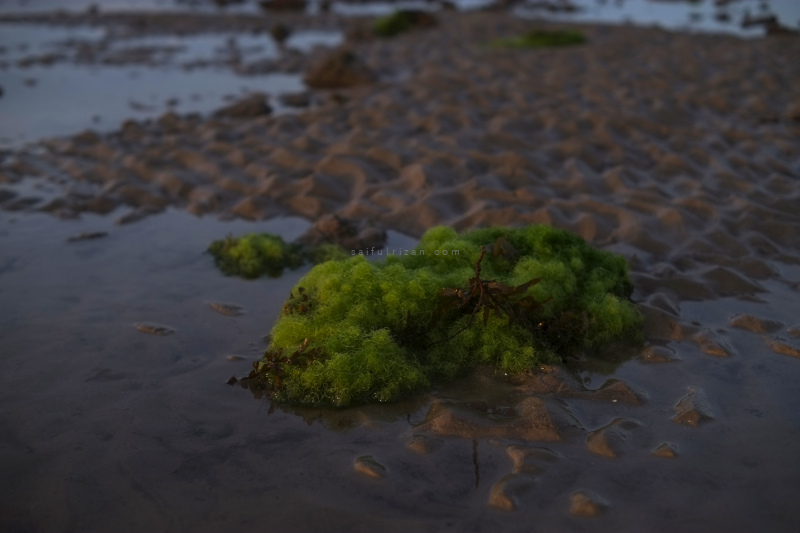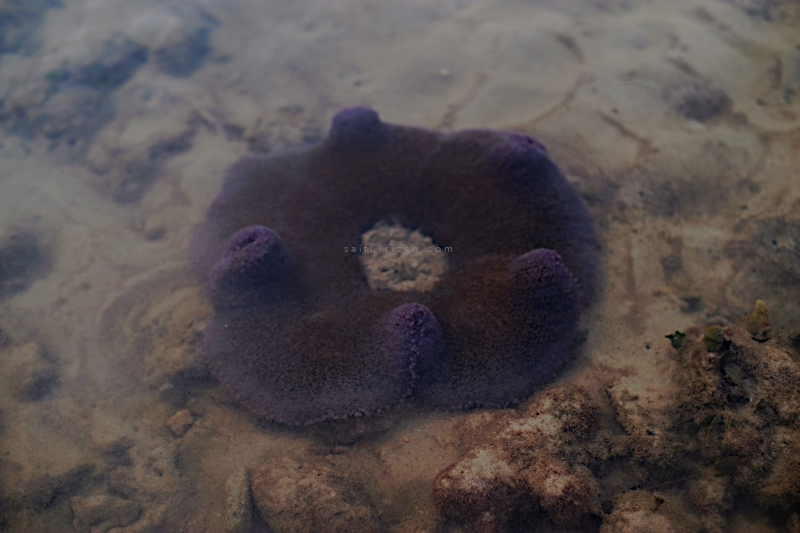The west part of this island is facing South China Sea. When it’s low tide, the slope (at some location) are visible up to 200 meters ahead. At the end of this slope will be a line of corals and rocks, then it will be steep. During this time, locals who lives near the beach will walk on this slope looking for stranded fish, clams, crabs and other edible sea creatures among the seaweeds, rocks and corals. For me, I always love a morning walk when it’s low tide.

Majority of these corals near the beach are hard corals. It provides shelter and habitat for fishes. Although sometimes I could find soft coral but that’s really rare. To walk among these hard corals, one must be careful not to graze your legs onto one of them. These corals may contain toxin that will cause pain and itching. That’s why you don’t touch coral when diving or snorkelling.


In general, to keep these corals alive, it begin with “Do not touch coral”. It is a delicate creature, and it is actually alive. While the hard coral provides shelter and habitat for the sea life, the soft coral is a food source for these marine life. When it is destroyed, fishes will go further to the ocean looking for a new place to call home and food to eat. This will affect those involve in fishing activities where fisherman now have to go further (more cost on fuel, more time spent on the boat, safety) and it (the cost) will eventually transferred to consumer. That’s why it’s expensive to buy fish in Labuan despite it is an island.

On the other hand, what you consume or use in land may eventually ended in the sea. That’s why you see all those PSAs telling you to reduce plastic usage, do not litter at the sea, using environmentally friendly chemical when washing, etc etc. Most of the time, when I’m out enjoying the beach walk, I will always find a plastic bottle and a plastic bag.
Take care of our ocean.
Leave a Reply